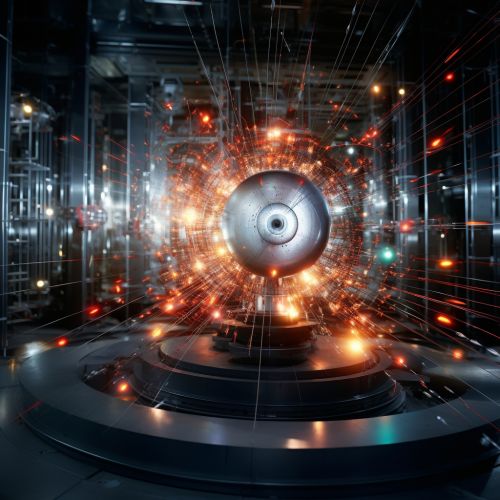Gauge Bosons
Introduction
Gauge bosons are a class of particles that mediate the fundamental forces or interactions among elementary particles. They are integral to the Standard Model of particle physics, which describes three of the four known fundamental forces: the electromagnetic, weak, and strong interactions. The fourth force, gravity, is not included in the Standard Model and is instead described by the theory of general relativity.
Types of Gauge Bosons
There are several types of gauge bosons, each associated with a specific force or interaction.
Photons
Photons are the gauge bosons for the electromagnetic force. They are massless and travel at the speed of light in a vacuum. Photons are responsible for the electromagnetic interaction between electrically charged particles.
W and Z Bosons
The W and Z bosons mediate the weak interaction, which is responsible for certain types of radioactive decay. The W bosons come in two types, W+ and W-, while there is only one type of Z boson. Unlike photons, these bosons are massive, which limits the range of the weak force.
Gluons
Gluons are the gauge bosons for the strong force, which binds quarks together to form protons, neutrons, and other hadrons. There are eight types of gluons, and they themselves carry the color charge that they mediate, leading to their self-interaction.
Gauge Theories
Gauge bosons arise in quantum field theories called gauge theories. These theories are based on the principle of gauge invariance, which states that the laws of physics should not change under certain transformations, known as gauge transformations.
Quantum Electrodynamics
Quantum electrodynamics (QED) is the gauge theory of the electromagnetic force. In QED, the gauge transformation is a change of the phase of the wavefunction of a charged particle, and the photon is the gauge boson that arises from this symmetry.
Quantum Chromodynamics
Quantum chromodynamics (QCD) is the gauge theory of the strong force. In QCD, the gauge transformation is a change of the color charge of a quark, and the gluons are the gauge bosons that arise from this symmetry.
Electroweak Theory
The electroweak theory unifies the electromagnetic and weak forces into a single gauge theory. In the electroweak theory, the gauge transformation is a change of both the phase of the wavefunction and the weak isospin of a particle, and the W and Z bosons, along with the photon, are the gauge bosons that arise from this symmetry.
Experimental Evidence
The existence of gauge bosons and their properties have been confirmed by numerous experiments. The photon was the first gauge boson to be identified, followed by the W and Z bosons, which were discovered at CERN in the 1980s. The gluons were indirectly observed through the phenomena of jet production in high-energy particle collisions.
See Also


